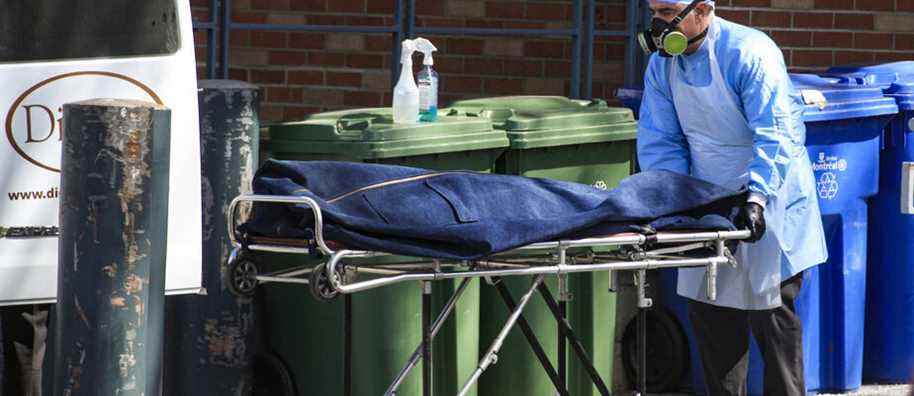About 10% of patients in CHSLDs and nursing homes for the elderly died during the first wave of COVID-19 in Quebec, in the spring of 2020. A real “massacre” which can be explained in particular by the poor state of the network before the pandemic and by the government’s management of the crisis, according to Réjean Hébert, professor at the School of Public Health at the University of Montreal.
For Mr. Hébert, the pandemic also revealed “the systemic ageism” that is rampant in Quebec. “We have paid very little attention to the thousands of deaths among the elderly. We haven’t seen an “Old Age Matter” movement. We have not seen a minister’s resignation. We have not seen any dismissal of a school principal. Even the wokes did not rise up to criticize this massacre among the elderly. We remained indifferent ”.
Mr. Hébert is the first witness to be heard Monday at the coroner’s public inquest examining the deaths that occurred in CHSLDs and seniors’ residences during the first wave of COVID-19. This is the last part of the vast public inquiry led by coroner Géhane Kamel.

PHOTO MARTIN CHAMBERLAND, PRESS ARCHIVES
Réjean Hébert
From 1er November to December 3, Coroner Kamel will hear a series of experts in Quebec and Shawinigan who will come to enlighten her on “the management by ministerial authorities of the pandemic in residential settings for the elderly or vulnerable”. Several speakers will also come to present recommendations.
Quebec’s national director of public health, Dr Horacio Arruda, head of the Nosocomial Infections Team at the Institut national de santé publique du Québec (INSPQ), Dr Jasmin Villeneuve, as well as Deputy Ministers Nathalie Rosebush and DD Lucie Opatrny will be heard among others.
Most affected province
Mr. Hébert recalled Monday morning that Quebec was by far the Canadian province with the highest death rate during the first wave of COVID-19.
Mortality rate in residential institutions between 1er March and 1er September 2020
- Quebec: 9.7%
- Ontario: 2.3%
- Canada: 1.6%
- British Columbia: 0.6%
- Spain: 5.3%
- United States: 2.3%
The Dr Hébert recalled that even before the pandemic, CHSLDs “were neglected”. With the merger of health establishments in 2015, CHSLDs were drowned in immense CISSS and CIUSSS, says Dr Hébert. The shortage of staff, including nurses and doctors, was also already present, notes Dr Hébert. The latter recalled that at the very beginning of the crisis, the government decided to “prioritize hospitals” by “freeing up hospital beds and transferring these patients to CHSLDs, who were already short of staff”. Several of the establishments are dilapidated. And while the poor ventilation of schools has caused a stir, that of CHSLDs is not necessarily of better quality, although “little data” exists on the subject, says Dr Hébert.
In his recommendations, Dr Hébert pleads among other things for a “prioritization of home care”. And for a “serious reflection” on the decentralization of the health network. The Dr Hébert also believes in the imposition of federal standards, including the staff ratio, in CHSLDs. “I think we have to help establish those standards,” he says.
The Dr Hébert says there is an urgent need to end systemic ageism in Quebec, especially because the province will be among the oldest societies in the world in ten years. The Dr Hébert presented the results of a survey conducted in June 2021 by professors Robert Bernier and Stéphane Paquin, from ENAP, showing that half of the Quebec population is satisfied with the government’s role in the management of CHSLDs. “The survey speaks volumes about the priority we place on our seniors in Quebec. And I am particularly worried about that, ”commented Coroner Kamel.
After the Dr Hébert, the hearing continues Monday with the testimony of Dr Quoc Dinh Nguyen, geriatrician and epidemiologist at the University of Montreal hospital center (CHUM).

